
We got to know and were heartfeltly amazed by such fabulous wall paintings by artisans of ancient Egypt. And naturally, these all motivated some painters, much later in the 19th century, like David Roberts, Jacob Jacobs, and many others, to try to copy these Masterworks. However, they did never reach close to the originals.


One of them was Robert Hay, not only a painter but also an Egyptologist. His works are fine and brisant.


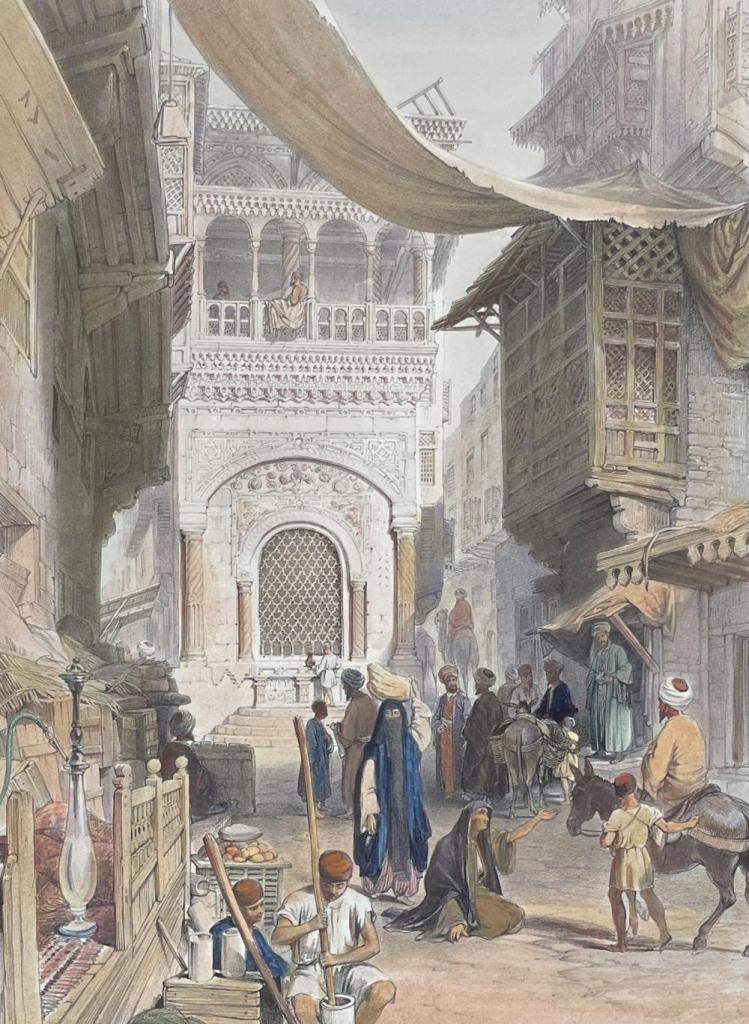
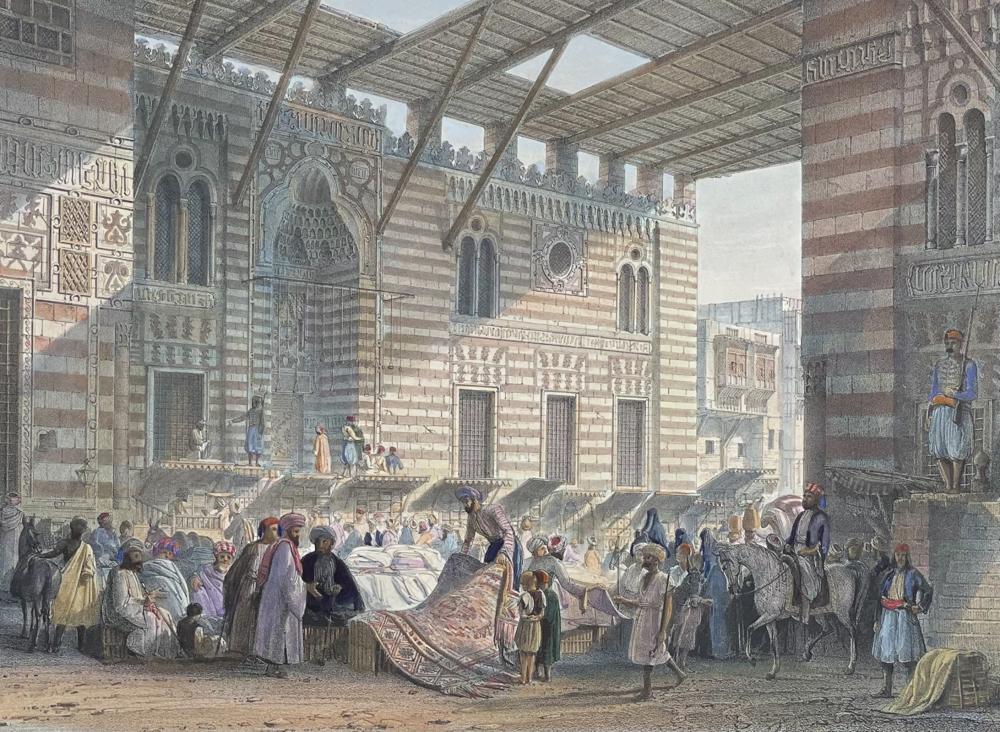
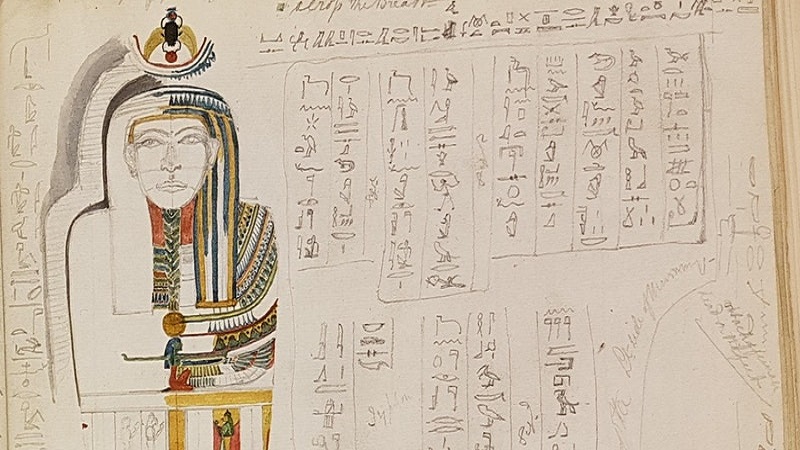
And here is an attempt to step into the shoes of grandees.
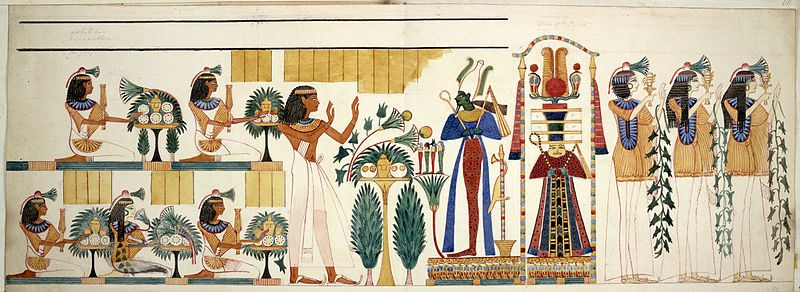
Images credit:https://landioustravel.com/egypt/ancient-egyptian-tombs/ / Stock Photo / invaluable / Wikimedia Commons
Let’s enjoy this brilliant article by Marie Grillot about this enthusiastic and fascinated man for the magic land of Egypt.💖🙏
Robert Hay: his precious drawings, plans, and surveys of 19th-century Egypt have much to teach us…
via; égyptophile

made during Robert Hay’s expedition to Egypt between 1826 and 1834
Robert Hay is a Scottish Egyptologist and collector to whom we owe an important and magnificent collection of drawings, plans and copies of hieroglyphic inscriptions. The 49 “volumes” he will bring back from his travels constitute a unique “sum” and an invaluable testimony to Egypt and its sites as they appeared at the beginning of the 19th century.
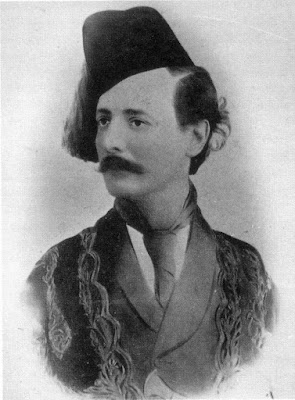
Robert_Hay_in_turkish_costume
Born on January 6, 1799, in Duns Castle in Berwickshire, Robert Hay first turned to a career in the navy, which also gave him the opportunity to visit Alexandria for the first time.
In 1819, when he was just 20 years old, he inherited – from his older brother – the Linplum estate. This legacy certainly leads him to reconsider his situation. So he decided to leave the navy, and in 1824, he left for the Middle East.
Strongly marked by the “drawings brought back from the land of the pharaohs by two architects”, it aims to survey the sites and ancient monuments of Egypt.
His thirst for learning, seeing, understanding, and interest in everything he discovers on the land of the pharaohs will never be denied. He will make many stays there, spread over ten years.
An excellent draftsman himself, he will be keen to surround himself with talented artists. During a stay in Rome, he hired Joseph Bonomi and offered him a modestly paid ‘commission’ as a sculptor and illustrator to accompany him on his Egyptian expedition. If Hay proves to be very demanding in the quality of the readings, wishing for maximum precision, Bonomi, ingenious and inventive, will be able to adapt and give the best of his talent, even when the working conditions prove to be complicated.
At Christmas 1824, they embarked for Nubia, where, for four months, they drew many sites. Then: “at the end of April, Hay and Bonomi leave Abu Simbel to continue the survey of various temples of Nubia before reaching Kalabsha (Beit al-Wali), where Bonomi works long hours, making numerous mouldings of the reliefs”.
After six weeks in Philae, they reached Thebes in October and found James Burton, a distant relative of Robert Hay, and settled in the Valley of the Kings.
In addition to Bonomi, Hay collaborated with half a dozen other artists, such as Owen Brown Carter, Frederic Catherwood, or even George Oskins, an antique dealer who, in particular, says: “The ‘Hay group’ most often stayed in the hypogeum of Ramses IV… The new occupants had stretched canvases at the monument’s entrance to protect themselves from the sun and installed their bedding in the corridors with a pleasant coolness.

The days were devoted to the surveys of the tombs. In parallel, Hay will conduct an in-depth study of the sarcophagi remaining in the Valley of the Kings. He will have many drawings executed.
But work also sometimes gave way to leisure. Thus, on Thursday evening: “artists and travellers passing through Thebes gathered in his house, or rather in his tomb… The beautiful paintings of the past were lit by torchlight, and the smell of mummies had been long chased away by the aroma of roasted meats.”
When Hay left the Valley of the Kings, he settled in a house in Gournah, a “small fortress” built-in 1820 by the consul Henry Salt, to house Athanasi in particular, which was located not far from the residence of the Egyptologist John Gardner Wilkinson. The relationship between Hay and the Egyptologist was special, as evidenced, in veiled terms, by this sentence: “Wilkinson and Hay had a lot in common. But they also had differences.”
In July 1826, considering he was paid too little, Bonomi decided to resign. He also wishes to strengthen his own reputation by producing designs and casts for himself. Hay is furious, but he finally quickly replaces him with Edward William Lane, nephew of the great painter Thomas Gainsborough.
In May 1828, Hay married in Malta Kalitza Psaraki, daughter of a Cretan magistrate whom he had previously rescued from the slave market in Alexandria. She will then accompany him on his various stays in the land of Egypt and will give him two sons.
In 1830, when Lane left his post for health reasons, Hay asked Bonomi to collaborate with him again, but this time with a much higher salary. “Bonomi hesitated at first, but Hay’s persuasion led him to finally agree to join the team by including one of his travelling companions, the artist A. Dupuy.”
In the spring of 1834: “Robert Hay definitively leaves Egypt where he has spent nearly ten years recording the temples and tombs of the Nile Valley, not only with sketches and brief descriptions, as earlier travellers had done but in a much more complete way, with plans, architectural data, detailed copies of wall paintings and inscriptions”.
Robert Hay published, in 1840, “Illustrations of Cairo”. The work, which brought together his own lithographs and those of his brilliant “colleagues”, did not receive the expected reception, and the author faced a big financial loss.
Years later, on February 28, 1862, James Burton died in relative destitution, abandoned by his family and friends. Robert Hay will be his executor and pay the debts he left behind.
He won’t survive a long time. It was the following year, on November 4, 1863, to be precise, that he died in East Lothian, Scotland, at the age of 64.
Pencil drawing by Robert Hay in 1827 of Border Stele A,
which shows Akhenaten, Nefertiti and their two eldest daughters making offerings
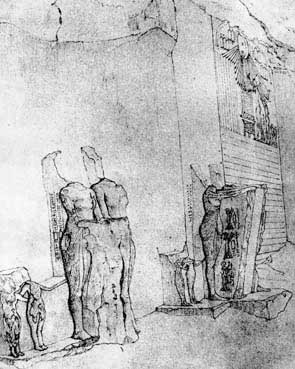
When he died, most of his collection of antiquities (529 pieces) was purchased by the British Museum “for £1000”. The rest of the objects inherited by his son Robert James Alexander Haye will be sold in London, in 1868, by the antique dealers Rollin and Feuardent to Mr Samuel A. Way. In June 1872, his son, C. Granville Way, donated it to the Boston Museum of Fine Arts.
As for the drawings, they remained for some time in the property of the Hay family, “but eventually they went to the British Library (then part of the British Museum), where they are now deposited in 49 portfolios”.
It remains for us to regret that the rich and interesting portfolios of Hay have not yet been published and to hope that they will be soon because, according to those who have had the immense good fortune to see them, it appears that “The Decorations of the Theban Tombs of Hay’s expedition are among the most delightful and the most precise. On the other hand, the panoramic views he drew provide reliable documentation of the small villages bordering the Nile nearly 200 years old. His artists’ evocative drawings of Islamic monuments, many no longer standing, show them in the 19th century.”
Sources:
The Lost Portfolios of Robert Hay, par Jane Waldron Grutz
Histoire de la Vallée des Rois, John Romer, Vernal – Philippe Lebaud, 1991
Six Views of Cairo – Robert Hay
Travellers in Egypt, Paul Starkey, Janet Starkey, Tauris Parke, 2001

Thank you for sharing another fascinating Egyptian post by Marie, Aladin. Thankfully, Robert Hay was inspired to document the incredible scenes he found and history was preserved. I’ve been to the British Museum many times and seen these drawings and artefacts so am doubly pleased to learn more about the ‘Hay’ group today. Love and light, Deborah.
LikeLiked by 2 people
Wow! You have seen his works, so you were ahead of me!😉 Thank you, as always, my angel, for your appreciation.🤗💖
LikeLiked by 1 person
Wow what wonderful artwork! The detail in his drawings is extraordinary and what an amazing place to make a temporary home – in the tomb itself…it must have been very beautiful when lit.
I realise that the James Burton Hay first met up with in Egypt was the son of James Burton senior, who is part of the history of local towns in the south east, renowned for his architecture there and in London as well. The family tomb is a pyramid shape and faces out to sea…it’s a small world!
LikeLiked by 1 person
Another lesson I got today, my beautiful Lin, thank you. I already noticed that a beautiful creator’s eye is looking carefully into my work. Stunning and pleasant. 🥰💖🤗🙏🦋
LikeLike
Another fascinating post on ancient Egypt! I loved it
Have a wonderful Saturday ❤️
LikeLiked by 1 person
Thank you, my lovely Luisa. I hope I woke up some memories in you from your journey.😉💖🤗😘
LikeLiked by 1 person
A lot of nice memories, dear Aladin 🙏💙🙏
LikeLiked by 1 person
🥰✌💖
LikeLiked by 1 person
Once again, a fascinating peek into Egypt…
LikeLike
You honouring me, Master. 🤙🙏✌
LikeLiked by 1 person
Reblogged this on Have We Had Help? and commented:
Thanks Aladin…
LikeLiked by 1 person
I thank You, my dear friend, for your kind support.🙏🤙🥰🙏
LikeLiked by 1 person
Reblogged this on https:/BOOKS.ESLARN-NET.DE.
LikeLiked by 1 person
Thank you for Reblog. 🙏🙏
LikeLike
Thank you. I’m sorry it’s taken so long for me to read this piece. I love the vivid and well-preserved tomb art of Egypt, but didn’t know all this history. Thanks for sharing it. One of my teachers, British writer Paul Brunton, wrote a book called “A Search in Secret Egypt”. PB had incredible access to the Egyptian tombs and teachings. I loved his book and loved exploring Egyptian art in recent years, especially the role of the Goddess. There’s an excellent collection in the Metropolitan Museum of Art in New York City.
LikeLiked by 1 person
That is wonderful! No problem, my dear elaine, if someone knows about the lack of time, it must be me. Thank you, as always, for your kind words, my dear friend.
LikeLiked by 1 person
Do you know if Hay “discovered” or documented the Tomb of Roy TT255 at Dra Abu al Naja, Thebes?
LikeLike
So far, I know, it was discovered in 1922 – 1923 and belonged to the 18th Dynasty (r. 1332–1323 BC), though you might look for it more, as I am not an Egyptologist!🤙
LikeLike